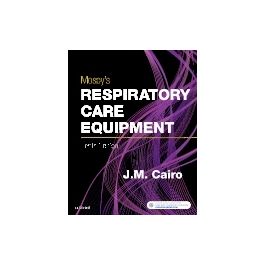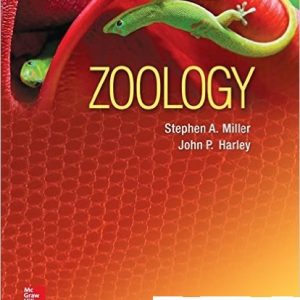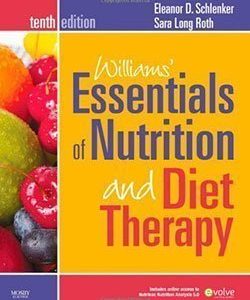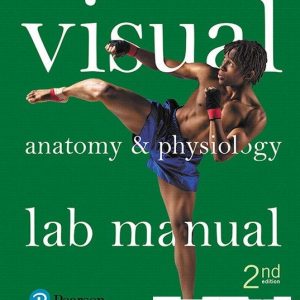This is completed downloadable of Test Bank for Mosbys Respiratory Care Equipment 10th Edition by Cairo

Product Details:
- ISBN-10 : 0323416365
- ISBN-13 : 978-0323416368
- Author: Jim Cairo
The most clinically relevant respiratory care equipment textbook on the market, Mosby’s Respiratory Care Equipment, 10th Edition employs a “how-to” approach that moves beyond technical descriptions of machinery. Learn to identify equipment, understand how it works, and apply your knowledge to clinical practice with this comprehensive overview of the equipment and techniques used by respiratory therapists to treat cardiopulmonary dysfunction. The 10th edition includes updated information on the latest devices and equipment, which are divided into clearly defined sections including: ventilators, transport, home-care, neonatal and pediatric ventilators, and alternative ventilators. In addition, there’s a focus on specific ventilator characteristics such as mode, monitors and displays, alarms and indicators, graphics, special features, and troubleshooting for lesser-used ventilators.
Table of Content:
- Section I Introduction
- 1 Basic Physics for the Respiratory Therapist
- I Energy and Matter
- II States of Matter
- III Physical Properties of Matter
- IV the Gas Laws
- V Fluid Mechanics
- VI Principles of Electricity
- Key Points
- Assessment Questions
- References
- 2 Principles of Infection Control
- I Principles of Clinical Microbiology
- II Infection Control Methods
- III Surveillance
- IV Isolation Precautions
- V Infection Control Issues in Mass Casualty Situations
- Key Points
- Assessment Questions
- References
- Section II Medical Gases
- 3 Manufacture, Storage, and Transport of Medical Gases
- I Properties of Medical Gases
- II Storage and Transport of Medical Gases
- Key Points
- Assessment Questions
- References
- 4 Administering Medical Gases
- I Regulators and Flowmeters
- II Devices for Administering Medical Gases
- Key Points
- Assessment Questions
- References
- Section III Airway Management
- 5 Airway Management Devices and Advanced Cardiac Life Support
- I Airway Anatomy
- II Airway Examination
- III Establishing a Patent Airway and Mask Ventilation
- IV Manual Resuscitators
- V Oropharyngeal Airways
- VI Nasopharyngeal Airways
- VII Supraglottic Airways
- VIII Subglottic Airway Devices
- IX Tools and Aids to Endotracheal Intubation
- X Adjuncts to Endotracheal Intubation
- XI Confirmation of Tracheal Intubation
- XII Specialized Endotracheal Tubes
- XIII Surgical Airway Devices
- XIV Tracheostomy Tubes
- XV Positioning Adjuvants
- XVI Equipment Used to Manage Artificial Airways
- XVII Complications of Airway Management
- XVIII Basic Life Support and Advanced Cardiac Life Support
- Key Points
- Assessment Questions
- References
- 6 Humidity and Aerosol Therapy
- I Humidity Therapy
- II Aerosol Therapy
- Key Points
- Assessment Questions
- References
- Internet Resources
- 7 Lung Expansion Therapy and Airway Clearance Devices
- I Incentive Spirometers
- II Intermittent Positive-Pressure Breathing Devices
- III Positive Airway Pressure Devices
- IV Chest Physiotherapy Devices
- V High-Frequency Oscillation Devices
- VI Mechanical Insufflation–Exsufflation
- Key Points
- Assessment Questions
- References
- Section IV Assessment
- 8 Assessment of Pulmonary Function
- I Respiratory System Mechanics
- II Measurement of Inspired Oxygen
- III Measurement of Nitrogen Oxides
- IV Capnography (Capnometry)
- V Indirect Calorimetry and Metabolic Monitoring
- Key Points
- Assessment Questions
- References
- 9 Assessment of Cardiovascular Function
- I Principles of Electrocardiography
- II Hemodynamic Monitoring
- Key Points
- Assessment Questions
- References
- 10 Blood Gas Monitoring
- I Invasive Blood Gas Analysis
- II Sampling Techniques and Collection Devices
- III Modern in vitro Blood Gas Analyzers
- IV CO-Oximetry
- V Noninvasive Assessment of Arterial Blood Gases
- VI Interpretation of Blood Gas Results
- Key Points
- Assessment Questions
- References
- 11 Sleep Diagnostics
- I Physiology of Sleep
- II Diagnosis of Sleep Apnea
- III Pathophysiology of Sleep Apnea
- Key Points
- Assessment Questions
- References
- Section V Critical Care and Extended Care Devices
- 12 Introduction to Ventilators
- I Physical Characteristics of Ventilators
- II How Ventilators Deliver Breaths
- III Descriptions of Commonly Encountered Modes of Ventilation
- IV High-Frequency Ventilation
- Key Points
- Assessment Questions
- References
- 13 Mechanical Ventilators
- Carefusion AVEA (Formerly Cardinal AVEA),
- Key Points
- Dräger Evitaxl
- Key Points
- Dräger Evita Infinity V500 and N500,
- Key Points
- GE Healthcare Carescape R860 (Previously Known as the Engström Carestation)
- Key Points
- Hamilton-G5
- Key Points
- Hamilton-C3
- Key Points
- Medtronic Minimally Invasive Therapies Puritan Bennett 840 and 980
- Key Points
- Maquet Servo-i, Servo-s, and Servo-U
- Key Points
- Assessment Questions
- 14 Infant and Pediatric Devices
- Continuous Positive Airway Pressure Systems
- The Infant Ventilator
- High-Frequency Ventilators
- Key Points
- Assessment Questions
- References
- 15 Transport, Home Care, and Noninvasive Ventilatory Devices
- I Transport Ventilators
- II Home Care Ventilators
- III Noninvasive Ventilation
- IV Home Bilevel Devices
- Key Points
- Assessment Questions
- References
- Appendix A Suggested Answer Key for Clinical Scenarios
- Authors’ Note
- Chapter 1 Basic Physics for the Respiratory Therapist
- Chapter 2 Principles of Infection Control
- Chapter 3 Manufacture, Storage, and Transport of Medical Gases
- Chapter 4 Administering Medical Gases: Regulators, Flowmeters, and Controlling Devices
- Chapter 5 Airway Management Devices and Advanced Cardiac Life Support
- Chapter 6 Humidity and Aerosol Therapy
- Chapter 7 Lung Expansion Therapy and Airway Clearance Devices
- Chapter 8 Assessment of Pulmonary Function
- Chapter 9 Assessment of Cardiovascular Function
- Chapter 10 Blood Gas Monitoring
- Chapter 11 Sleep Diagnostics
- Chapter 12 Introduction to Ventilators
- Chapter 13 Mechanical Ventilators: General Use Devices
- Chapter 14 Infant and Pediatric Devices
- Chapter 15 Transport, Home Care, and Noninvasive Ventilatory Devices
- Appendix B Answer Key for Chapter Assessment Questions
- Chapter 1 Basic Physics for the Respiratory Therapist
- Chapter 2 Principles of Infection Control
- Chapter 3 Manufacture, Storage, and Transport of Medical Gases
- Chapter 4 Administering Medical Gases: Regulators, Flowmeters, and Controlling Devices
- Chapter 5 Airway Management Devices and Advanced Cardiac Life Support
- Chapter 6 Humidity and Aerosol Therapy
- Chapter 7 Lung Expansion Therapy and Airway Clearance Devices
- Chapter 8 Assessment of Pulmonary Function
- Chapter 9 Assessment of Cardiovascular Function
- Chapter 10 Blood Gas Monitoring
- Chapter 11 Sleep Diagnostics
- Chapter 12 Introduction to Ventilators
- Chapter 13 Mechanical Ventilators: General Use Devices
- Chapter 14 Infant and Pediatric Devices
- Chapter 15 Transport, Home Care, and Noninvasive Ventilatory Devices
- Appendix C Normal Reference Ranges
- Appendix D Frequently Used Formulae and Values
- Gas Laws
- Flow Rates, and Mixing Air and Oxygen
- Formulae Used With Gas Laws
- Formula Used When Mixing Air and Oxygen
- Formulae Used When Calculating Humidity
- Formulae Used With Mechanical Ventilation
- Formulae Used With Compliance and Resistance
- Formulae Used When Calculating Dead Space
- Glossary
- Index
- Abbreviations





